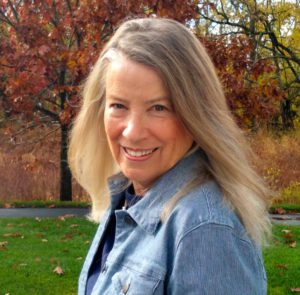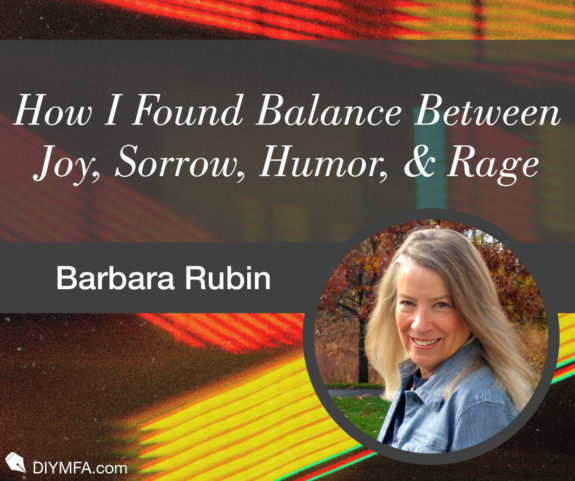I came from a family of great storytellers. Growing up I saw first-hand how stories came about and then took on a life of their own. Some occurrences, which at the time, may have been harrowing experiences, would later be retold as a lighthearted story repeated with laughter and joy at family gatherings. The segments of the tale became more animated and embellished with each telling.
The common denominator for those storytellers was their ability to see humor in everyday routines, and when they were provided with happenings that were rich in detail, colorful characters, and unusual circumstances, they could enhance the narrative with all the gestures and impersonations necessary to bring the story to its highest level of entertainment for all those listening.
My memoir, More Than You Can See, starts with an accident, one that leaves my seventeen-year-old daughter, Jenn, with a traumatic brain injury. This section was emotionally rough for me to write, but it was where the story began and was a necessary part for my readers to know and understand.
There was no way to gloss over the pain, no way to be funny or lighthearted in the opening scene. But that was not the heart of the story; it only set the stage for readers as they followed my journey over the years of Jenn’s recovery.
Are there other parts in the book that have sorrow? Yes! But I wouldn’t have written the book if most of the story wasn’t uplifting, humorous, and joyful. Who of us has lived a life without disappointments, sadness, or grief? Not my family. But we also had reason to be thankful not only for Jenn’s survival but for the strengths we had as a family that helped us rise above the bad things that happened and continue living life to its fullest.
Where did the humor come from in the story? Not from me. A few months after her accident, Jenn began displaying a quirky, funny personality. Her accident left her with no way to verbally communicate, but even without words, she began to capture people’s hearts and attention with her expressions, smiles, giggling outbursts and laughter. Her unpredictable behaviors caught us off guard and kept us guessing what she would do next. Jenn was a puzzle of complicated issues but was as endearing as she could possibly be. And after we transferred her to a group home in Connecticut, three new caregivers brought their own element of hilarity to the situation.
These young women were accepting of Jenn for who she was; they were not hampered with grief worrying about who she had been. Energized to give their new charge an exciting life, they brought all the levity needed to keep Jenn entertained and living her best life. Like my family’s storytellers, these lighthearted women saw humor in Jenn’s actions and the mishaps that came throughout their workday.
In the book, I wrote about their anecdotal stories of caring for Jenn, from their interesting trips to new places, to the simple daily routines that kept Jenn busy and active. They never had an adventure without a big story to tell upon their return. They seemed to encounter colorful characters wherever they went and never lacked in finding comical situations to give all their stories more drama than others might have seen or looked for. And they let no day pass without making special memories at some point during their hours spent with Jenn.
Those were the scenes I painted for my readers, as I knew they held the greatest possibility for the inspiration and understanding that can come from caring for a person with disabilities.
Balanced against the fun parts of the book, readers will also come to know my inner turmoil. I held dark and mournful thoughts about Jenn’s injury in my mind and soul. I didn’t let others see what was eating at me inside, as I didn’t want my unhappiness to hamper the joy my daughter was having. It’s my healing and lessons learned that may serve as a benefit for those who choose to read More Than You Can See.
There are also episodes of pure rage in the book. My reaction to the driver of the truck who caused the accident was the most profound. I wanted my readers to feel and respond to the character as I had initially, with hatred and hurt. Thankfully, this small segment does not take away from the other positive parts of the story. I didn’t let it cast is ugly shadow over me at the time it happened, and I wouldn’t let it in the book either.
Two of the caregivers also had moments of rage when they witnessed intolerance expressed toward Jenn from people in the community. Situations that took these lighthearted women and brought them to tears was an important element I needed to convey in the story. Few people in our communities know or appreciate the challenges faced by a traumatic brain injury survivor, and because of that, they sometimes lack the empathy needed to understand and accept fellow citizens who are different or special but want love and kindness the same as everyone else.
An early reader told me she “laughed and cried through every chapter.” Balancing those two emotions was key to telling my story. A book that is all sweet and perfect doesn’t hold my interest. Likewise, a story that is constantly dark and painful leaves me despondent and upset. I need both the positives and negatives resonating off each other for a book to capture my attention and hold it. That was the balance I chose to use in my memoir, as it best reflected the true essence of the story.

Barbara Rubin writes this story of joy and sorrow mixed with humor and rage as both mother and advocate for her daughter Jenn. In this role, she witnessed firsthand the battles that come when a person is the most vulnerable, but she also saw the gift of human kindness and the difference it can make in another person’s life. She hopes that her journey, lived through her daughter’s injury, will help others understand the lessons that can be learned from tolerance and will give hope to families whose paths have also been darkened by tragedy. This is her first book. Barbara resides in Washington Crossing, PA.
You can find her on her website or follow her on Facebook.







